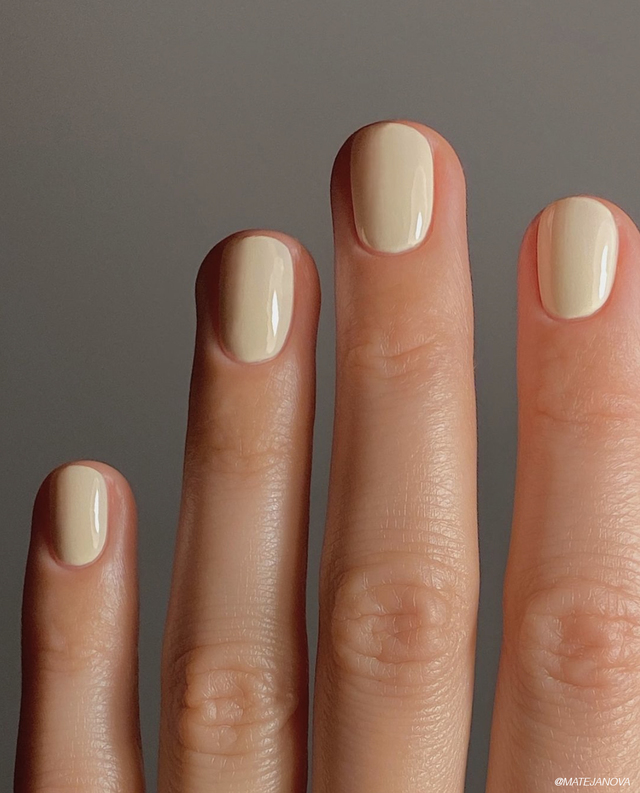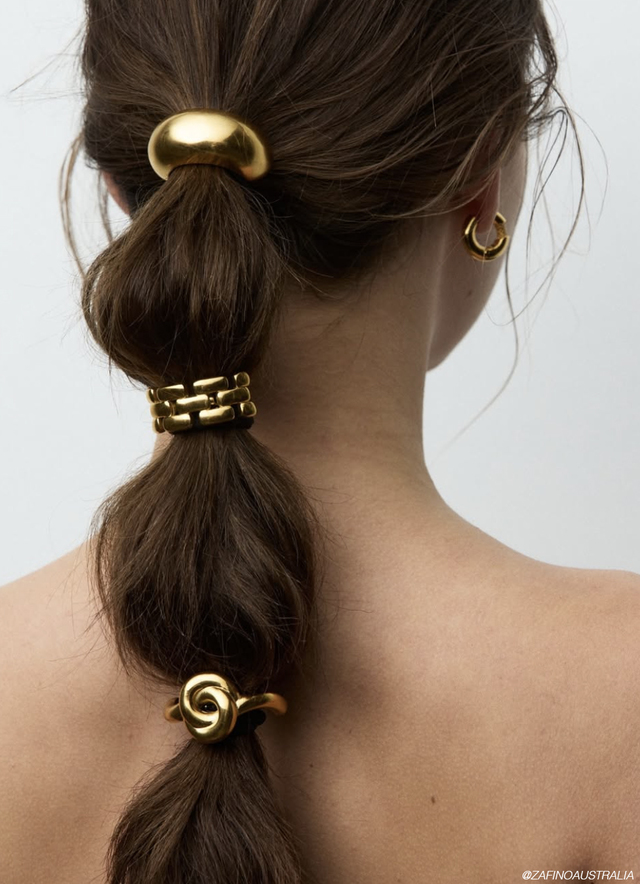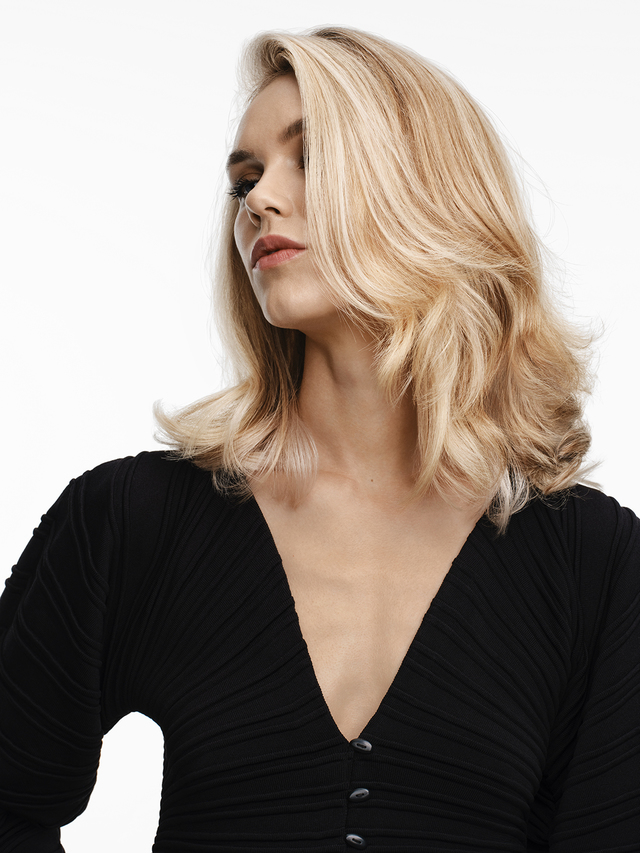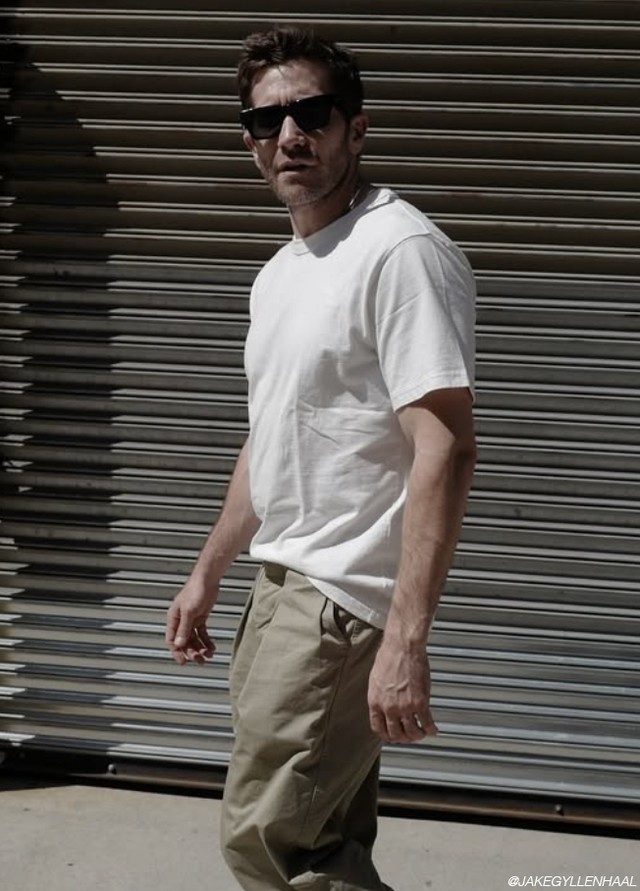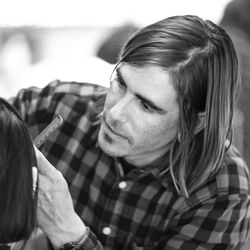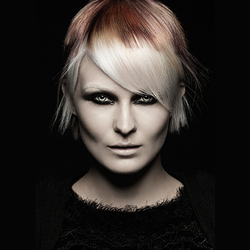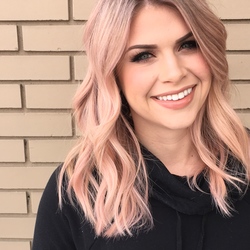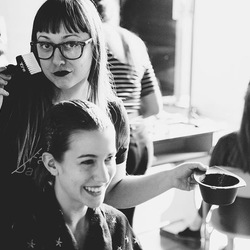In Color Corrections 101 we went over the what, when, and how much of corrective color, now we're diving into the why and the who!
Following the consultation, we can start to assess the canvas in front of us and begin to make a plan. Read on as we delve into the technical side of why certain colors become corrections, who needs corrections, and how to approach them. Let’s being with some of the more common hair fixes we encounter:
What is Banding?
Banding is one of the most common forms of corrective color, it typically comes from changing base color levels and tones. This can happen when a client changes from one hairstylist to another often, they occasionally do their hair at home, or wait a very long time in between color services. Banding can also happen from unintentional hot roots (when the root color is brighter and lighter than the rest of the hair). We can either choose to eliminate banding by matching the darkest tone and level or by lifting through the darkest bands. To decide your plan of action, base your decidion on a combination of #hairgoals and hair health. To avoid banding in the future, encourage clients to stick with a single stylist and come in for consistent touch-up services.
Let's Talk Tiger Stripes
We’ve all seen it at least once since our first day of beauty school, those little splotches from foils that slipped, or a lightening product that expanded more than we thought. Why does this happen? Well, the foil is a conductor for heat, and as bleach expands it can swell out of the foil packet we created. When the bleach touches the other hair it creates lighter marks that we call ‘bleeders’ or ‘tiger stripes’.
How do we avoid it? Take smaller sections so that the foils can remain in place, additionally do not bring the product to the edge, leave room for it to expand.
How do we fix it? This depends on how much spotting a client has. This type of color correction is best accomplished going slice by slice and treating each parting individually. Pick a mid-tone, dark tone, and a light tone and paint according to what is best to mask the marks. Unless the client did their highlights at home this is likely a stylist error. And, now that you have fixed them up they’ll likely be yours forever.
What About Wild Tones
Fashion tones from pink to green to blue may be in style, but they can be a little shocking if we didn’t expect them.
Why does this happen? Sometimes it’s buyer’s remorse from not completely understanding what “ash blonde” translates to, and other times it can be a porosity issue due to the fact that the hair grabbed onto a color faster than expected, or possibly because someone failed to re-pigment the hair before going darker. If a surprising tone is your only challenge, choose your favorite clarifier or color remover and work away at unwanted tones first and then even out our porosity before trying anything else.
How do we fix it? Knowing what we are removing is key. Permanent hair color can only be removed by shrinking the color molecules with a color remover or by bleaching them out. Semi, Demi-permanent, and temporary tones don’t live as deeply in the strand so we can approach removing them more gently with clarifiers, hair detoxing products, and color removers. *Pro tip: save bleach as a last resort. Two things to always keep in mind before jumping in are, a) do we want to preserve any natural virgin hair between the unwanted tones and b) how is the integrity of the hair. To avoid unwanted tones in the future, thorough consultations about desired tones and hair porosity treatments are the way to go.
Harsh Lines, Splotches, and Everything in Between
The remaining corrective color falls in a land of paint by numbers. If a client’s hair has consistent harsh lines, splotches, or an all-over permanent color that needs to be removed then it needs to be tackled not only slice by slice (similar to what we did for tiger stripes) but also zone by zone. Each area may have a different history and because of that needs a different set of skills. As a rule of thumb, regrowth area tends to be the healthiest, ends are the most at risk and the mid-shaft tends to be the most resistant. Not only should the volume of the developer we choose reflect that, but so should our application methods and chosen treatments.
The Final Result
Corrective color is a right of passage for every hairstylist..and most clients. While we can’t eliminate color whoopsies from the world all together we can guide our clients and help them avoid future color faux pas. Remember, have a thorough consultation, set realistic expectations, always consider hair goals and hair health and you’ll be on your way to color correction mastery.
Written by: Nicoletta

